Keeping Time
Note: This is a general introduction to the techniques of keeping time with the hands. Timekeeping patterns for specific tals are also given on the main page for each tal in the Tals and Thekas section.
Demonstrations of Keeping Time
Timekeeping demonstrations for tintal, a tintal tukra, and a tintal kayda:
Introduction to Keeping Time
In North and South Indian classical music, keeping time means showing, or marking the tal with the hands. This is done with claps and waves, or by counting on the fingers.
Keeping time is something that all classical musicians do, both for themselves in their practice and for other performers. Listeners will also sometimes keep time in order to better follow a performance.
As mentioned in the section on tal, the literal meaning of tal is “clap”. For this reason, in Hindi, keeping time might be called tali dikhana, (“showing clap”) or tali bajhana (“playing clap”). These two phrases really just mean “showing the tal” or “playing the tal”, and they remind us that keeping time with the hands is strongly connected to the concept of tal itself.
Keeping time develops our awareness of both the matra (beat) and the vibhags (divisions) of the tal. In other words, we develop our awareness of the tal’s structure.
With regular practice, this awareness becomes automatic. We can then improvise or listen more deeply, while still knowing, or feeling, where we are in the tal.
For tabla players, keeping time is more than just an essential skill; it becomes an automatic habit that we do almost every day. Using one of the various techniques discussed below, we keep time as we speak compositions, compose in our heads, calculate mathematics, or listen to performances.
And for listeners, learning to keep time is one of the best ways to follow a performance and understand the music.
Two Timekeeping Techniques
There are two general techniques that we will look at below:
- Keeping time with claps and waves
- Counting the matras on the sections of the fingers
Each of these techniques has a different focus:
- Clapping and waving focuses on the structure of the tal.
- Counting on the fingers focuses on the matras of the tal.
Tabla players need to use both. Listeners can also benefit greatly from either of these simple techniques.
Keeping Time with Claps and Waves
In this simple technique, we mark the different vibhags (divisions) of a tal with either a clap or a wave:
- Tali vibhags (stressed) get a clap on the first matra of the vibhag.
- Khali vibhags (unstressed) get a wave on the first matra of the vibhag.
Remember that all vibhags in a tal are either tali (stressed) or khali (unstressed). So the claps and waves show us the tali-khali stress pattern of the tal.
Below we see the timekeeping patterns for 3 different tals: tintal, jhaptal, and rupak tal.
Timekeeping in Tintal
Tintal is a 16-matra tal divided into 4 vibhags of 4 matras each (4–4–4–4), with the pattern tali-tali-khali-tali, or stressed-stressed-unstressed-stressed:
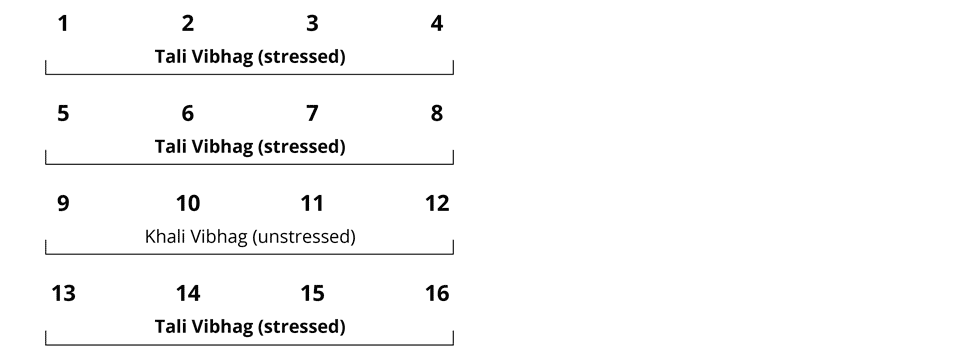
Tintal Timekeeping Pattern:
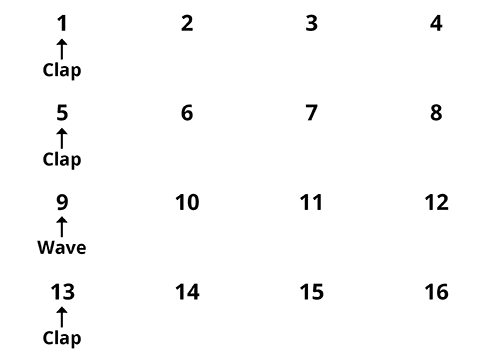
Tintal Timekeeping Demonstration
Timekeeping in Jhaptal
Jhaptal is a cycle of 10 beats, with divisions of 2–3–2–3, and a stress pattern of tali-tali-khali-tali:
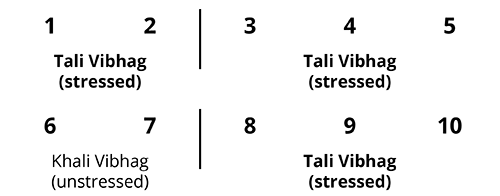
Jhaptal Timekeeping Pattern:
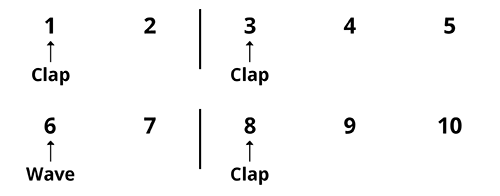
Timekeeping in Rupak Tal
Rupak tal is a cycle of 7 beats. Rupak has a vibhag division of 3–2–2, with the pattern khali-tali-tali:

Rupak Tal Timekeeping Pattern:

Clapping and Waving on the Knee
It is also common to clap and wave on the knee or thigh while sitting down. This technique may not be as helpful for other musicians because the sound of the clap is not as loud, and it’s not as easy to see. But it is common for musicians counting for themselves.
Counting Each Matra While Clapping and Waving
Sometimes it is helpful to count the matras between the claps and waves, especially at slower tempos.
In this technique, the first matra of the vibhag gets a clap or a wave, followed by a different finger for each matra. The finger order is usually (1) pinky, (2) ring, (3) middle, etc., depending on how many matras in the vibhag.
The video below shows this technique for tintal, jhaptal, and rupak tal:
Some people start with the ring finger (after a clap or wave), then middle, and index fingers. But starting with the pinky appears to be the most common.
Counting on Sections of the Fingers
Another way to keep time is to count each matra of the tal on the different sections of the fingers:
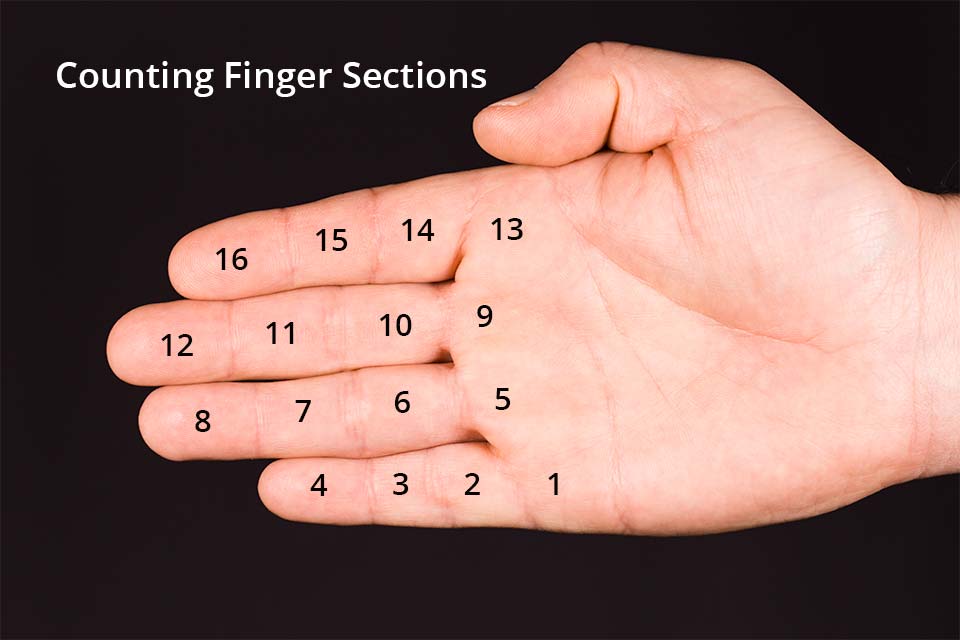
Tabla students will use this technique often, especially for calculating the mathematics of compositions. However, this technique is mostly used for oneself, not for showing the tal to others.
Counting is done with the thumb, and sam (matra 1) is typically at the base of the pinky finger:
You can count the matras before each line of the finger sections (as in the photo and video above), or you can count the matras on each line of the finger sections, including the tip:
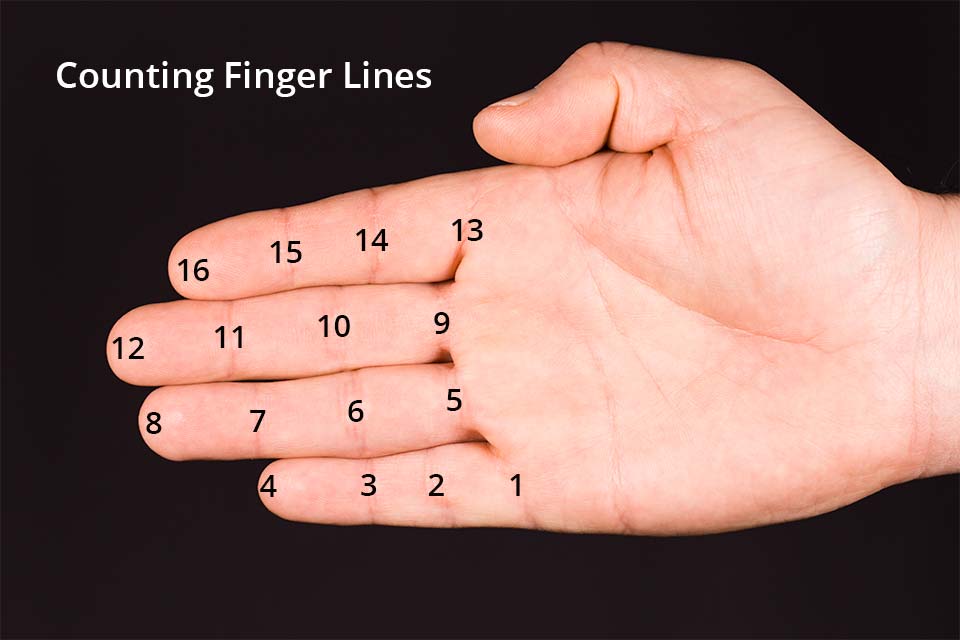
Different players may use different techniques of counting this way. For example, some count in reverse from the index finger down to the pinky. Since this is only for the person counting, find a technique that works for you and be consistent.
The fingers create an outline of the tal
One of the best reasons to use this technique regularly, is that the sections of the fingers create a graphic representation of the tal. For tintal in particular (the most important tal), the 4 sections of the 4 fingers perfectly match the 4–4 structure of the tal.
Some tabla players speak of having an image of the tal’s cycle in their minds when they play. Counting on your fingers in this way while you are speaking can help you develop that image in your mind when you are playing.
Counting in Tals Other Than Tintal
For tals with uneven lengths or divisions, such as jhaptal (10 matras) or rupak tal (7 matras), there are two common methods for counting on the finger sections.
Method 1. Count all four divisions of each finger until you reach the end of the tal, such as in the video above:
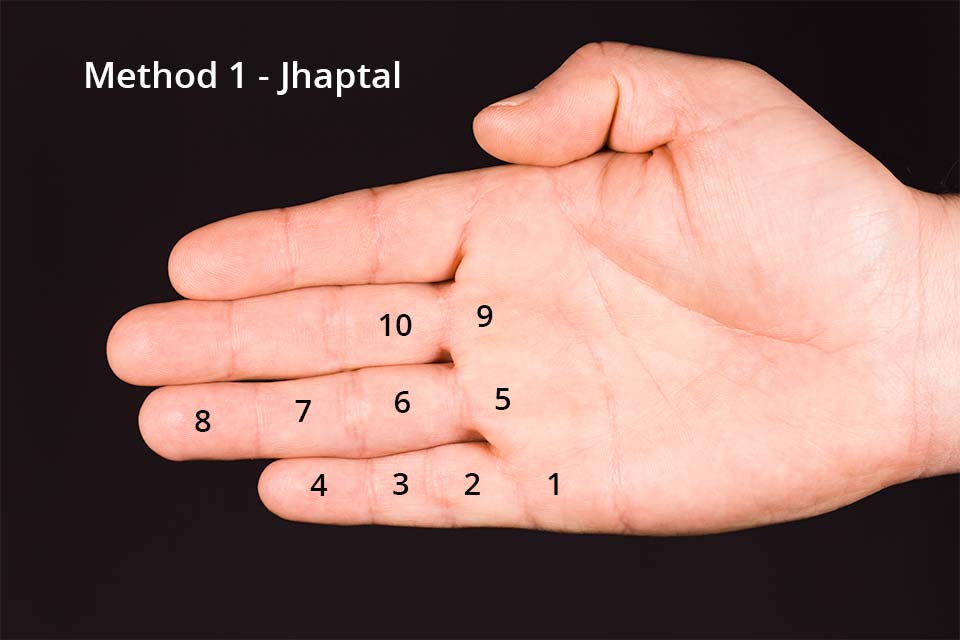
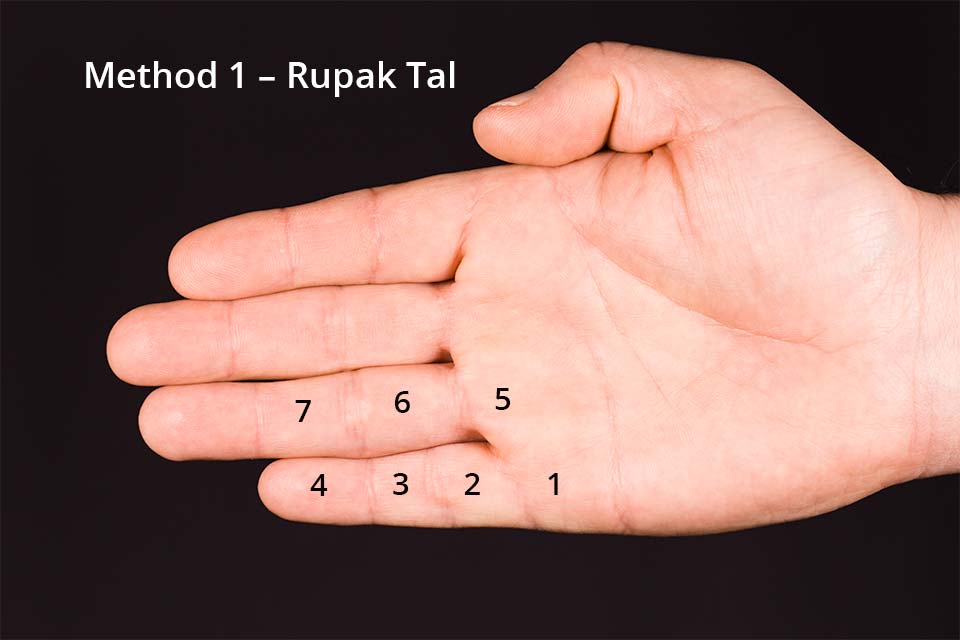
Method 2. Count in a pattern that follows the vibhags of the tal:

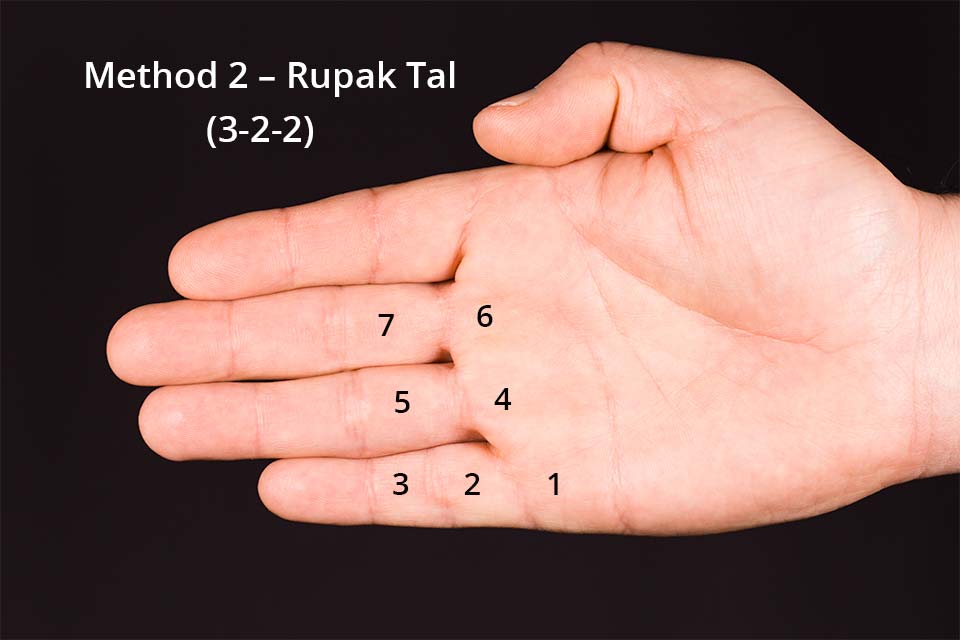
The second method can get complicated for some longer tals, but it works well with the most common tals. Use whichever method you feel comfortable with.
Vibhag Indicators = Timekeeping Pattern
In written compositions, you will often see vibhag indicators, such as X, 2, 0, 3 which we see in tintal below:

These indicators show the tali-khali pattern of the tal. In other words, they give us the timekeeping pattern for that tal.
See the discussion on Vibhag Indicators for more information about how to read these marks. And see the Tals and Thekas section for the vibhag indicators in other tals.
Keeping Time in Practice
Both methods of keeping time (clapping and waving, and counting on the finger sections) are important for tabla students to use regularly. Listeners will also benefit from keeping time while listening.
Counting on the finger sections is easier because after you start, you just keep following your fingers around and around, and you can ignore the vibhags of the tal.
But clapping and waving requires that you follow the matra and the vibhags, including their tali-khali pattern. This is important practice for tabla players; being aware of the tal’s structure while you are performing is essential.
Eventually, you will develop a strong awareness of both structure and matra using either technique. But in the beginning, you will notice that keeping time with claps and waves while you are speaking requires more concentration than counting on your fingers.
For tabla students, keeping time will be a regular part of the lessons on this site. And listeners can easily practice keeping time for any composition on DigiTabla by following the vibhag indicators. See the Listener’s Guide for more suggestions.